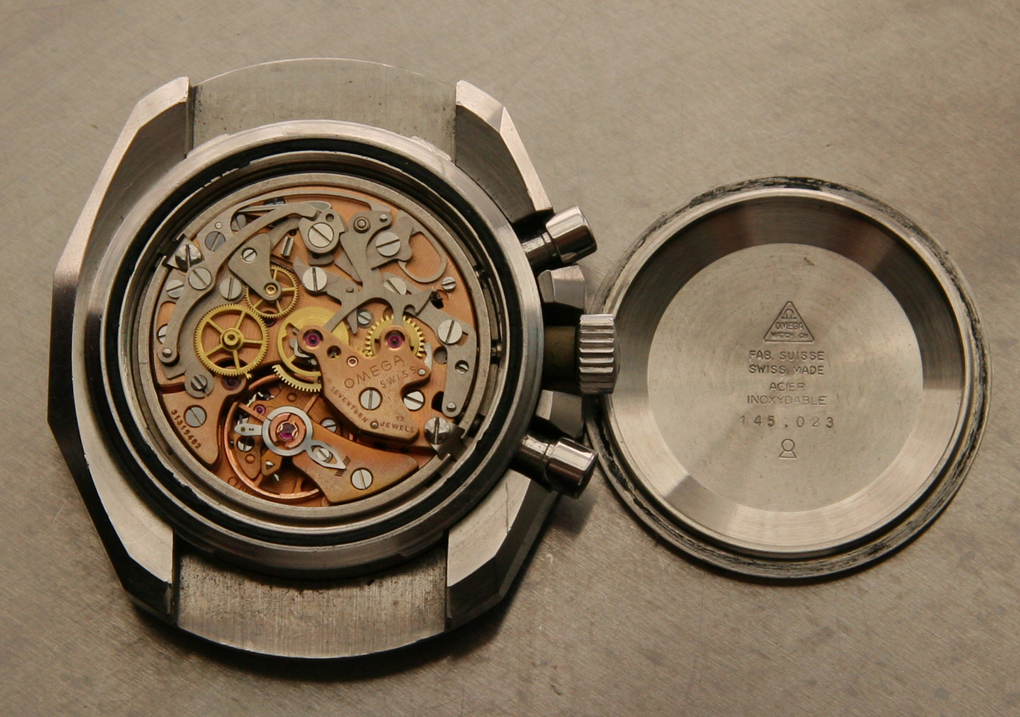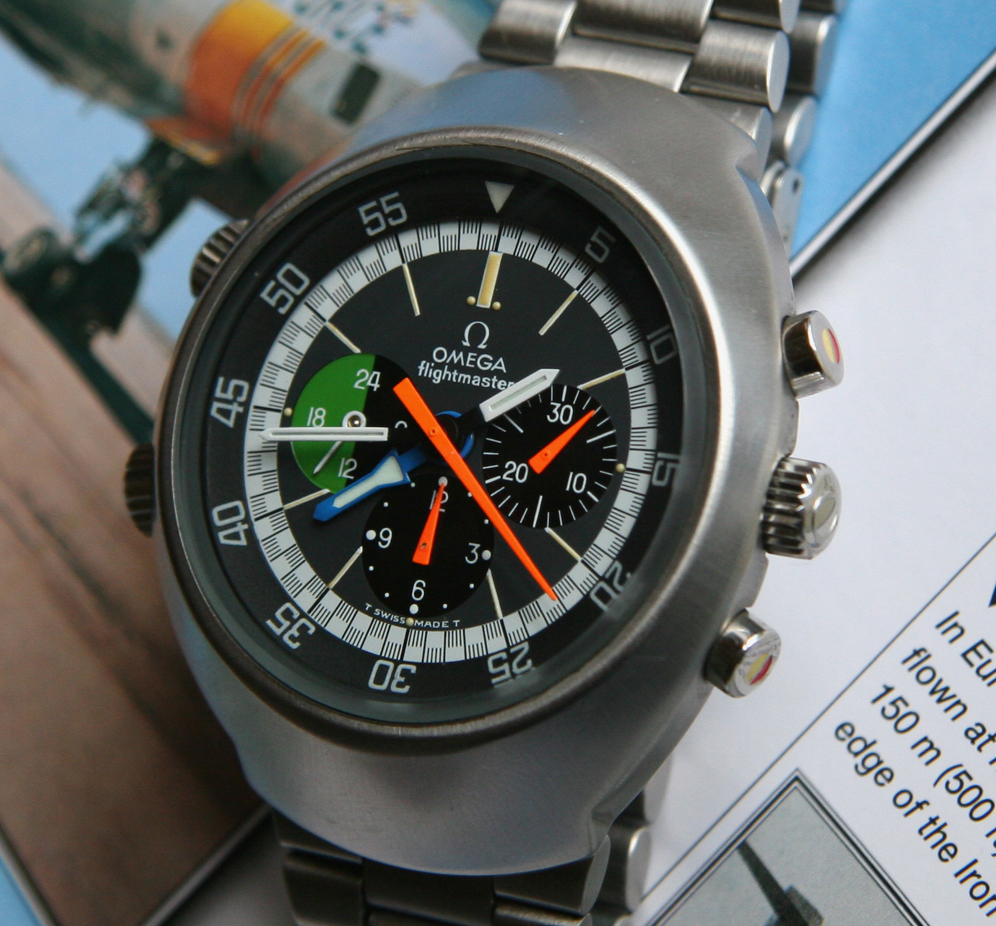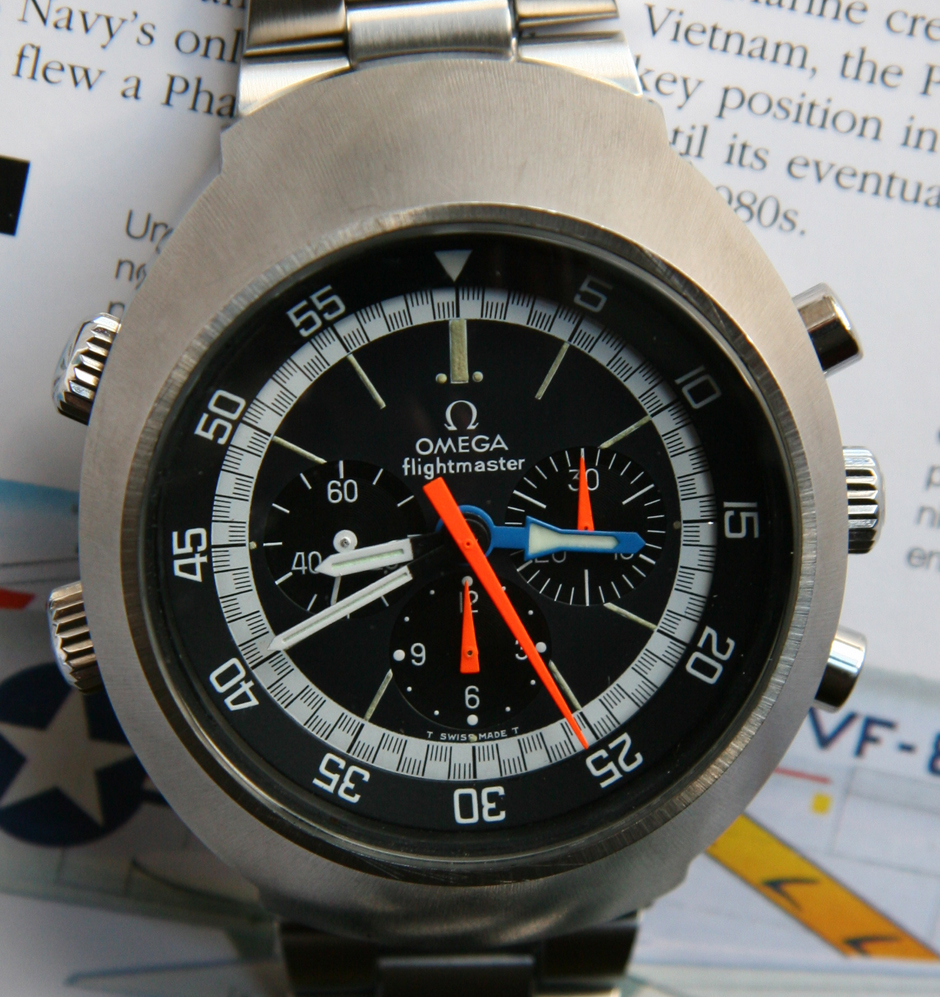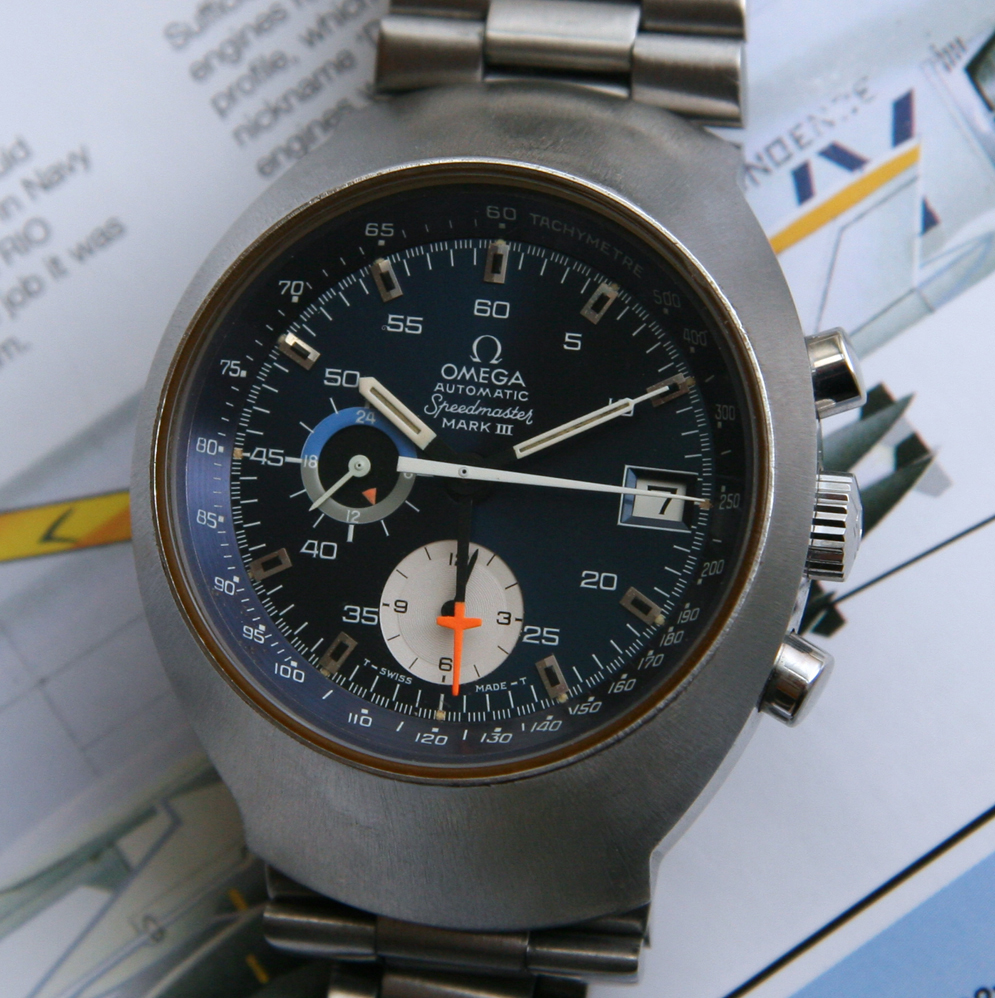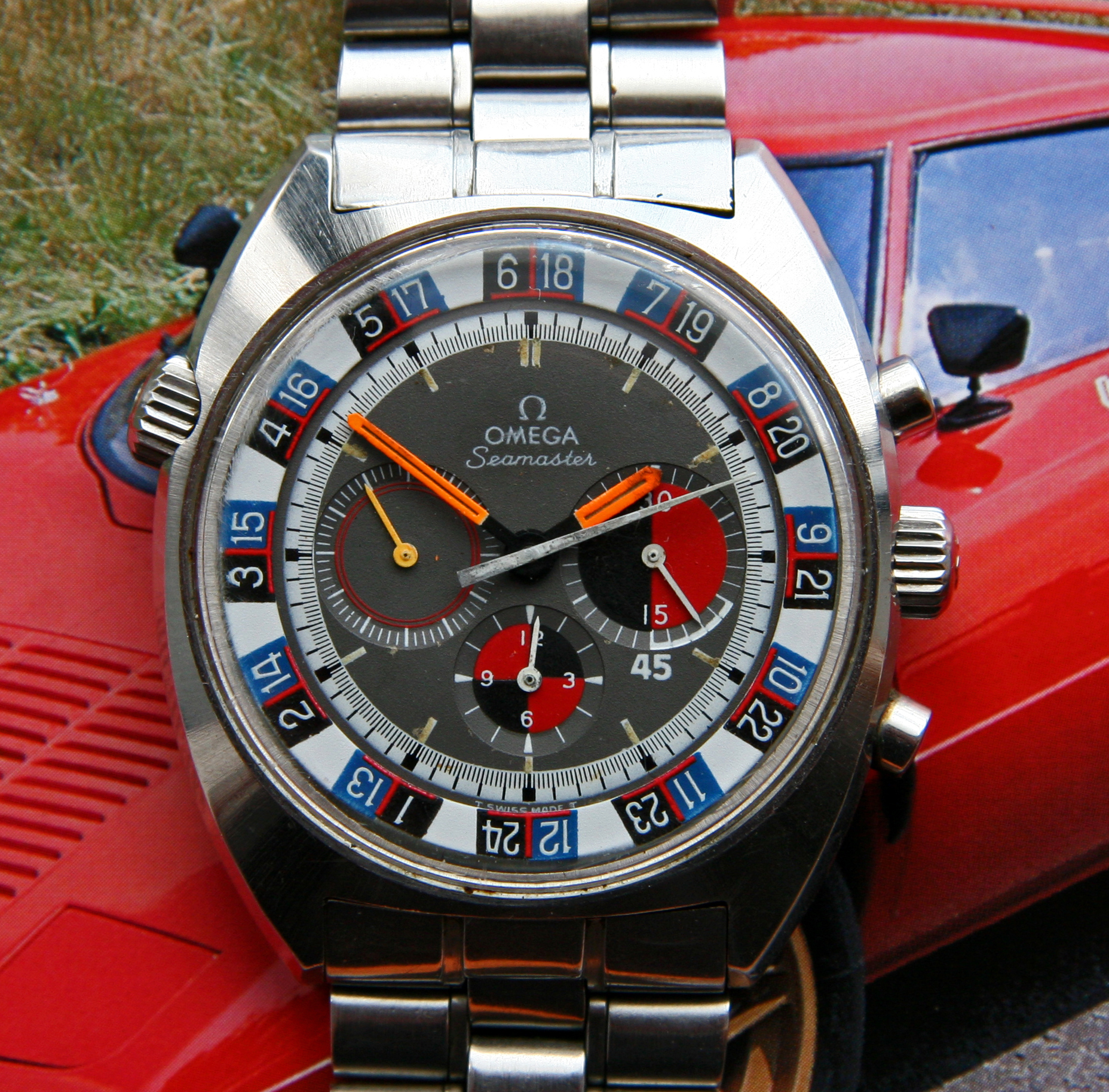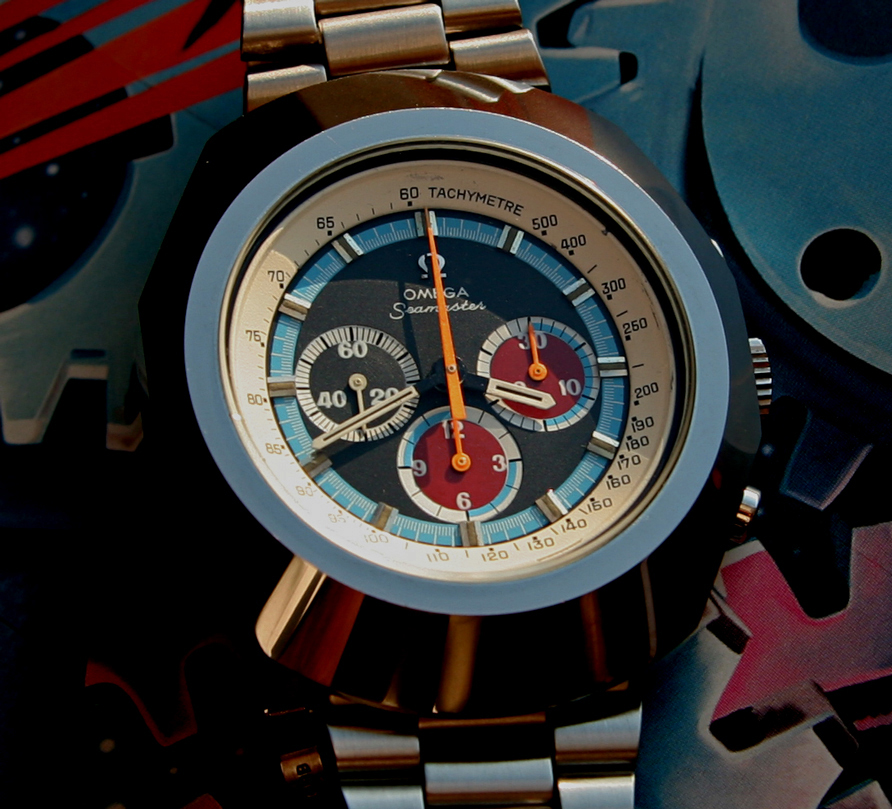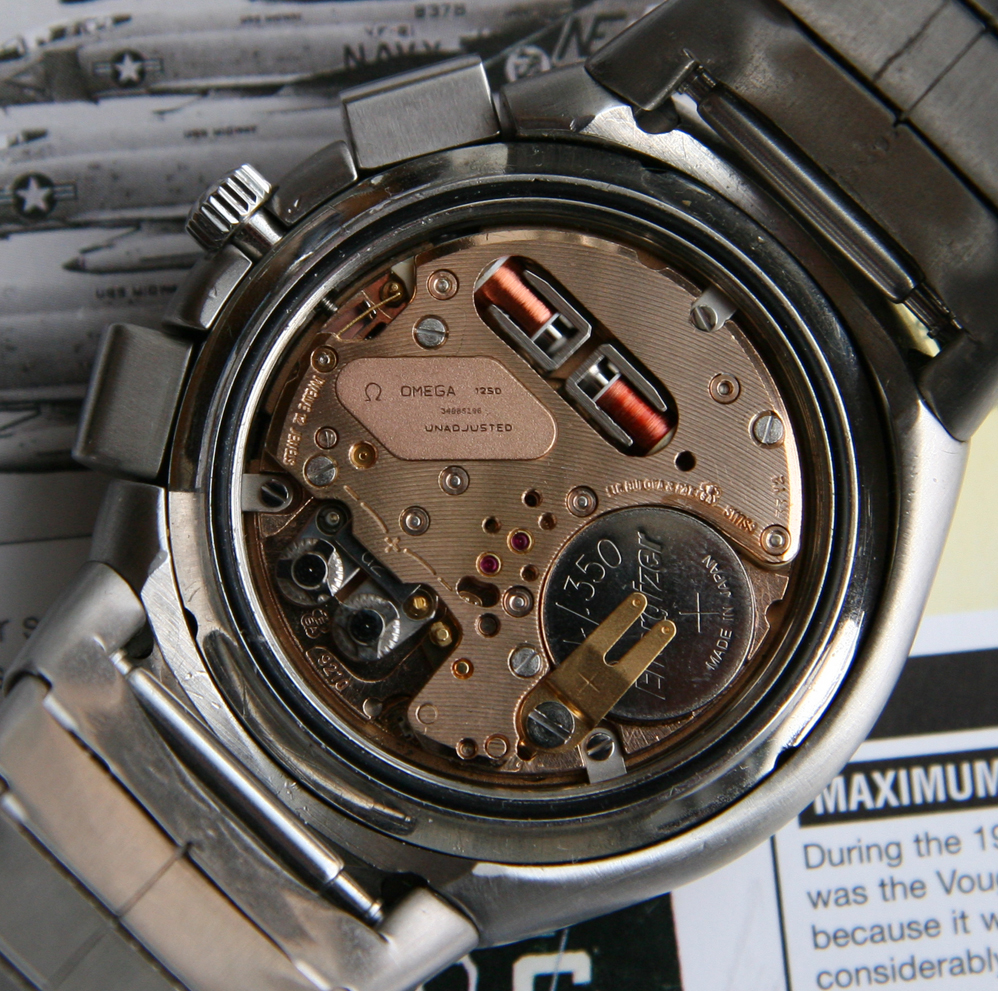The great Swiss watch manufacturer Omega took the polar opposite approach to archrival Rolex’s conservatism during the turbulent 1960s and 70s. If Rolex was almost entirely unwilling to deviate from their main design concepts and stayed restrained in the face of the funky fashions sweeping the watch world, Omega was ready and willing to try a little bit of everything to capture the spirit of the times and the dollars, francs, pounds and yen of the trendsetters of that era. As characteristic of the 1970s as boot cut jeans and polyester leisure suits, Omega’s chunky and near Pop-art chronographs of this period make a retro statement like few other watches. They’re not to everybody’s taste to be sure but for those that enjoy wearing these colorful beasts there’s great fun to be had by taking a time trip to the past.
Jumping off from their enormously successful Speedmaster Professional (aka “The Moonwatch”), Omega decided to let their design team smoke a little of the good stuff and have some fun creating a new range of Speedmaster and Seamaster chronographs incorporating newly developed case shapes and calibers. At first designs like the Speedmaster Mark II & III had the traditional black dials/white hands like their predecessor but soon a veritable rainbow of colors was busting out all over. The newly launched manual wind caliber 861 and new automatic chrono caliber 1040, both Lemania-based, seemed to lend themselves to inventive case shapes and color schemes, as Omega chased fashion trends with massive tonneau cases and dispensed with conventional lugs altogether.
Of course, as a proud supplier to NASA, Omega were also intent on expanding on their “Professional” line to be maximally useful to the aeronautic industry. Perhaps the best example of that flight-driven design ethos was the Flightmaster line, which featured a modified cal. 861, the caliber 910, which initially incorporated a 24-hour day/night register in place of a constant seconds, as well as an adjustable 12-hour GMT hand for the reading of a second time zone on the face of the watch.
Clearly, this was a belated attempt by Omega to create a watch that would rival Rolex’s venerable GMT-Master in its appeal to long distance travelers and pilots. But the competing models could not have been more dissimilar in appearance, as in addition to the high rise tonneau case, the Flightmaster featured an inner rotating elapsed time bezel and four color coded buttons to delineate all the functions of the chronograph and GMT hand. For some reason, the second series of Flightmaster jettisoned the day/night register in favor of a return to the constant seconds (cal. 911) but the watch still had far out written all over it.
As if the Flightmaster case was not quite tall enough, Omega decided to house its brand new automatic chronograph movement, the Lemania-based cal. 1040, in the wrist skyscraper that was the Speedmaster Mark III. At its most attractive, the Mark III sported a Shelby Cobra sunburst blue dial.
But it also could be found with a silver dial with baby blue highlights, as well as the standard black. And in case the Mark III was not enough of a door jamb knocker, Omega produced variations of this early automatic chrono in the shape of great massive wrist televisions. Definitely not for the faint of heart…or wrist!

Seamaster “Jedi” Chrono – pic from Antiquorum
Over on the Seamaster side of things, the Electric Kool Aid design team was certainly in full swing, with a wonderfully color clashing “Soccer Timer” chrono (again powered by the redoubtable 861) with special 45-minute deliniations and optional bezel calibrations–the dual-timezone “Roulette” bezel being the rarest and craziest.
But wild dials were only part of the equation, as Omega experimented with massive Tungsten-coated angular cases to house their chronos. These models, nicknamed by the late great Chuck Maddox “Anakin” for the silver and “Darth Vader” for the black, had harder-than-steel metal grafted on to their cases (although this coating did not scratch it was prone to chipping).
Produced in relatively few numbers, these models, still with the 861 under the hood, are extremely sought after by collectors and fetch good money when they are found. (As an aside, the brand Rado also embraced this “hard metal” case technology back in the 70s and still uses the same process and, in fact, case shape in many of their models).
And no review of 70s Omega chronos would be complete without mention of the tuning fork-based “Speedsonic” line. Utilizing a version of Bulova’s “Accutron” battery-powered movement, these models represented Omega’s first concession to the burgeoning quartz revolution, as well as possibly a technological hedge to keep them up to date in their offerings to NASA and the public (a classic and detailed review of the Speedsonic here by Les Zetlein). The most remarkable and distinctive of these Speedsonics was the “Lobster Tail” integrated bracelet version, some of which featured a high polish mirrored dial.
Though not destined to take the watch world by storm as Omega might have hoped, the Speedsonics were an interesting detour by a company willing to try just about anything to keep consumers interested in their watches. Like sideburns, pleathor and brightly colored muscle cars, Omega’s 1970s chronographs go in and out of style and have a cult appeal. But to those looking for something a little bit out there, a little bit bold and funky, there aren’t many vintage watches that can rival them for making a statement on the wrist. They’re fun and they’re unmistakeably vintage with a capital “V”. So don’t fear the reaper (or the door jamb): strap one on and get down tonight!



